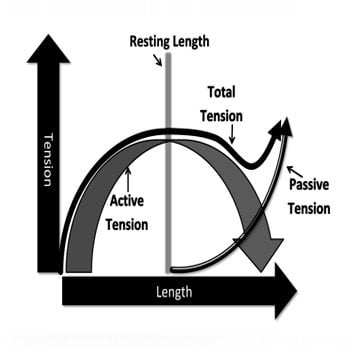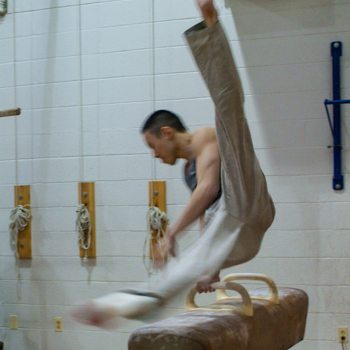Trying to piece together a training program for yourself can feel really overwhelming. There are a million choices and recommendations, and it’s hard to know what you can trust.
 One resource we’ve recommended for years is Steven Low’s Overcoming Gravity, which has been widely trusted since it was first released in 2011. Now in its second edition, Overcoming Gravity (OG) is a detailed guide to understanding fundamental principles of gymnastics and bodyweight training.
One resource we’ve recommended for years is Steven Low’s Overcoming Gravity, which has been widely trusted since it was first released in 2011. Now in its second edition, Overcoming Gravity (OG) is a detailed guide to understanding fundamental principles of gymnastics and bodyweight training.
If you enjoy bodyweight training and understanding the “why” behind what you’re doing, OG will make a great addition to your library. In this review, I’ll share what you can expect from this resource, and how best to put it to use.
A Look Inside Overcoming Gravity
 OG is an interesting and incredibly dense book (583 pages!) that attempts to address every issue and question about the development of strength through bodyweight training.
OG is an interesting and incredibly dense book (583 pages!) that attempts to address every issue and question about the development of strength through bodyweight training.
I love this book because, as a former gymnast, I am such a nerd for gymnastic-type training information, but for the average non-nerd, it can seem pretty overwhelming if you don’t know how to use this incredible resource.
The good news is you certainly don’t have to read the book cover-to-cover to get great benefit from it. Each section contains useful information depending on what you’re looking for.
To help you navigate Overcoming Gravity and see which parts will be most applicable to you, I’m going to go part-by-part below:
Part One–Fundamental Knowledge Base

Here’s an example of the detailed information about training that Steven includes in this chapter.
And Steven knows what he’s talking about! His own physical feats include 4 one arm chin-ups on both arms, a 10-second iron cross, and a strict rings muscle-up with an additional 70 pounds strapped to him.
The progression charts presented in chapter 3 are an integral part of this book, as they are the roadmap to high-level skills.
What is likely under-appreciated is Steven’s advice on goal setting. It’s easy to be overwhelmed by the number of skills you may want to achieve, and unless you can analyze and make specific actionable goals, you’ll flounder and plateau.
Who should read Part One: Anyone with an interest in the hows and whys of training. If you want to really understand why strength training works the way it does, you’ll get a lot out of this chapter.
Part One includes:
- Common principles of training (such as the SAID principle and progressive overload), and how they apply to bodyweight training
- Physiology of building strength and muscle, and the role of the central nervous system
- Detailed progression charts for the skills he’ll teach, including advice on setting goals based on your current level
- Introduction to how Steven suggests you program these exercises
- Considerations for specific populations (sedentary vs. active; young vs. old; sport-specific vs. recreational training; uninjured vs. injured)
Part Two–Constructing Your Routine
 This section presents the details of a well-planned and executed workout session, with the methods of progression and cycles that will take you through your entire training year. Steven’s advice on constructing your routine also takes into consideration other activities, such as sports training and endurance work.
This section presents the details of a well-planned and executed workout session, with the methods of progression and cycles that will take you through your entire training year. Steven’s advice on constructing your routine also takes into consideration other activities, such as sports training and endurance work.
At the end of each chapter in Part Two, Steven includes “stop reading, take action” bullet points, as well as summary points, which help tremendously.
This is definitely a book that can drive your training for years, but it helps to have specifics highlighted so you don’t get lost. Steven recognizes this, and these actionable summary points are big improvements from the first edition.
I found this section particularly interesting because I’ve come to internalize a lot of principles that I see in these chapters in all my years of teaching and training clients (in person, online, and with our programs).
It takes a lot of experience to articulate these concepts and Steven clearly lays these out.
Who should read Part Two: Anyone wanting to build their own training routines. This section will help you understand how to work through progressions, build strength, and create training cycles that keep you working toward your goals throughout the year.
Part Two includes:
- Details of workout construction–here, Steven builds on the programming principles he introduced in Part One, and provides more details on how to construct your workouts
- Different types of bodyweight strength work, including concentric, eccentric, and isometric training
- Simple and complex methods of progression, depending on where you’re currently at
- Prehabilitation and flexibility work–there’s some good information here about how to protect yourself against injury
- How to plan cycles in to your training so that you are focusing on different aspects of training at different times throughout the year (for more information on this, see our article on this topic)
Part Three–Factors That Influence Training
 This section really resonated with me because of how we approach training at GMB.
This section really resonated with me because of how we approach training at GMB.
Here, Steven addresses the very real challenges we all face when “life gets in the way,” and how to deal with that. The way he constructs his routines also takes into consideration other activities, such as sports training and endurance work, since most people have other goals beyond bodyweight skills.
Our method is all about helping you build a strong and capable body for your life and your interests, so I really enjoyed this section of OG.
Who should read Part Three: Really, this section applies to pretty much anyone who trains. If you have other activities, such as endurance or sport training, that you’re into, this section will address that. And even if bodyweight strength training is all you do, we all could use some help avoiding injuries and dialing in our nutrition and sleep.
Part Three includes:
- Other supplemental training, including endurance, cardio, cross training, and others, and how these work together with the exercise progressions he recommends
- Health and injury management–Steven addresses what makes some people more prone to injuries than others, and how anyone can manage and prevent injuries
- Nutrition, sleep quality, getting sick, and other lifestyle factors that will impact your training and progress
Part Four–Program Implementation
 In Part Four, Steven takes all of the previous sections and provides specific examples on how to create an individualized routine for yourself, whether you’re an untrained beginner or an advanced trainee.
In Part Four, Steven takes all of the previous sections and provides specific examples on how to create an individualized routine for yourself, whether you’re an untrained beginner or an advanced trainee.
This section, along with Part Five’s exhaustive exercise descriptions, make up the meat and potatoes of this massive resource.
The common setbacks section at the end of these chapters will help prevent frustration as you go through your planned routines and hit some inevitable sticking points. Steven’s advice will help keep those points from lasting longer than they have to and will keep you moving forward, rather than getting too frustrated and quitting.
Who should read Part Four: This section is specifically for anyone who wants to create individualized routines from the exercises taught here. You can skip to the chapter that applies to your current level of training and read only what applies to you.
Part Four includes:
- Separate chapters for each level of training experience (untrained beginner, trained beginner, intermediate, and advanced). Each of these chapters tells you how to construct your routines and progressions.
Part Five–Injury/Prehabilitation Resources and Bodyweight Exercises
 This section contains an extremely detailed listing of bodyweight and gymnastic exercises and their progressions.
This section contains an extremely detailed listing of bodyweight and gymnastic exercises and their progressions.
Part Five’s dictates on common bodyweight training injuries and health injury management, and suggestions on how to care for them, are quite good–which shouldn’t be surprising since Steven has his Doctorate in Physical Therapy.
There are quite a few trainers/coaches out there trying to be rehab professionals, but in this case Steven actually is one, so you can definitely trust what he’s saying!
Who should read Part Five: Much of Part Five is not meant to be read page by page, but rather used as a reference guide. If you’re interested in bodyweight or gymnastic training, you can benefit from having this reference on your shelf. You’ll come back to it pretty frequently.
Part Five includes:
- Common injuries that can occur with bodyweight training, and how to deal with them
- Extensive library of exercises and their progressions–this is a fantastic reference guide for any bodyweight trainee
How to Use Overcoming Gravity in Your Training
 Overcoming Gravity can be a bit of an overwhelming resource if you don’t know how to use it. Steven has been very passionate about the “teaching a person to fish” philosophy, as he writes:
Overcoming Gravity can be a bit of an overwhelming resource if you don’t know how to use it. Steven has been very passionate about the “teaching a person to fish” philosophy, as he writes:
“The programs included in this book are examples to give you an idea of what your created routine could look like. Don’t use these routines verbatim; instead follow them as guidelines and modify them to fit your own goals, recovery factors, and to allow room for other activities you enjoy. The goal of Overcoming Gravity is to teach you how to construct effective routines…”
It takes study and effort to do this, but if you are interested in creating routines for yourself or your clients, you’d be hard pressed to find a better resource to learn from.
Steven has committed himself to helping others learn, by contributing to Reddit and other online forums, and through his detailed blog posts on his website. Overcoming Gravity is definitely an extension of (or representation of) the work he’s put in to that.
OG is a fantastic resource for trainers, coaches, or any fitness enthusiast who loves learning about the hows and whys behind these exercises, but it may not be as accessible for the average trainee, especially for visual learners.
| This book is great for you if: | You may want to consider other resources if: |
|---|---|
| • You want a detailed and comprehensive guide to bodyweight training • You're interested in the hows and whys of training • You want to make your own training programs (for yourself or your clients) | • You don't have the time or interest in making your own training programs • You're not so interested in the technical details about bodyweight and gymnastic exercises |
But whether you use it alone, or as a supplemental reference guide, it’s a resource worth having.



